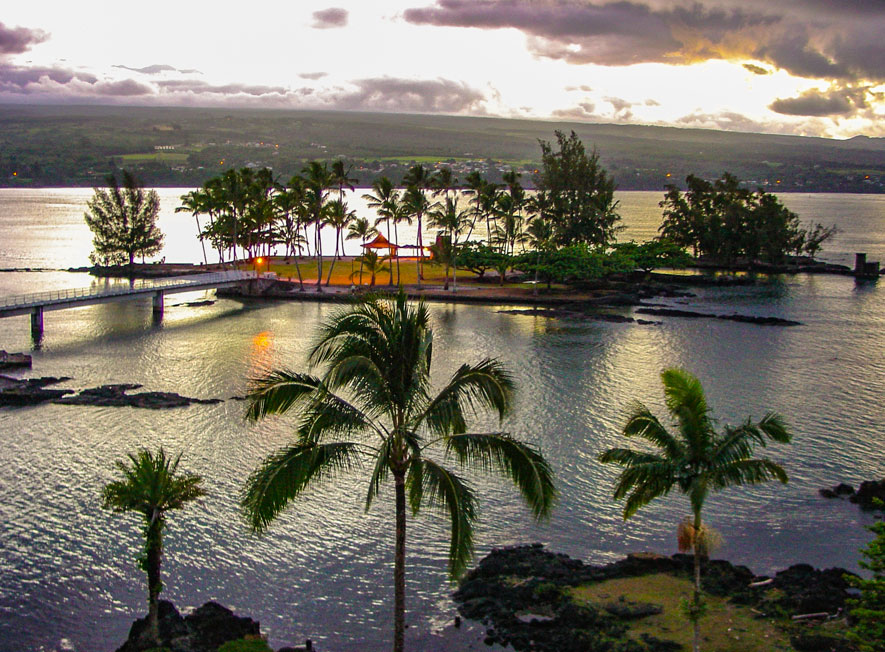Powerful isolation
If you think Australia has some energy challenges, consider Hawaii.

Made up of eight main islands, Hawaii has six separate island grids and no interconnectors. It’s the most petroleum-dependent state in America, with a renewable energy mix that varies wildly across those six systems. And there’s a large geographical mismatch between energy demand and possible energy locations.
And yet, the state of Hawaii is boldly pushing ahead with an aggressive clean energy policy, committing to 100 per cent renewables by 2045. Hawaii can afford to dream large, and be confident they’ll reach their targets, because of advances in off-grid renewables technology. But also its highly variable and segmented system gives it the space to find bespoke solutions to Hawaii’s energy challenges.
This was the message from Richard Rocheleau, Director of the Hawaii Natural Energy Institute, who was an international keynote speaker at the Isolated Power Systems Connect conference held on Flinders Island in December and hosted by the University of Tasmania, Hydro Tasmania and Entura. We heard that, while Hawaii has a totally unique geography and energy mix, its approach can provide insight for other isolated communities and regions seeking their own energy independence.
ARENA’s Off Grid Projects team attended the conference to share our own insights and knowledge because we know our own projects, like Rottnest Island and Weipa, are increasingly proving that, with good information, innovative engineering and bespoke integrations, renewable energy systems can work.
But we were also there to learn about how others are grasping the opportunities that developments in off-grid are presenting. Speakers from the Rocky Mountain Institute, Asian Development Bank and International Energy Agency were all on the conference agenda. (Not bad for a little island in the middle of windswept Bass Strait!).
A very fitting venue
The small community on Flinders Island made sure a big welcome was made to all who visited. While not distracted by the amazing scenery from Trouser’s Point (cue classic east Tasmanian coastline: big granite mountains topped in greenery and orange boulders surrounding a crystal blue bay) I spoke to a few of the Flinders Island locals, who were excited about the Flinders Island Hybrid Energy Hub.
It was developed by Hydro Tasmania with support from ARENA and will come online early next year, displacing 60 per cent of the islands diesel-generated energy with a mix of solar PV and wind.
Many conference attendees had travelled from around the globe to see this system for themselves. Imagine an off grid renewable solution that can be shipped straight to site, built to the exact specifications needed. A large contingent of people from the Pacific wanted to know more about this ‘containerised’ approach.
Learning from ARENA’s off-grid projects
ARENA has learnt a lot about off grid renewables through our portfolio, so when we were given the chance to present to this audience, we didn’t just share the ‘what’, we shared the ‘why’:
- Why build up to 30 off grid projects in the Northern Territory? Well it’s not just to prove a cookie cutter style deployment can work, it’s about transforming a business through practical innovation. Shifting their everyday operations and decisions to seeing renewables as their business as usual. Shifting to a fleet of off grid renewable systems means Power and Water Corporation shifts their planning, training and maintenance to renewables. Adding in a high penetration site means they can test a solution that can be rolled out in the future. Why’s this interesting to a small group of people sitting in a room on Flinders Island? I think the guy from the Federated States of Micronesia whose job is to roll out renewables to 39 islands was listening, learning and looking for similarities and differences.
- What about the Rottnest Island Water and Renewable Energy Nexus? Why do that? Using a smart control system to manage discretionary load is cool but it’s not the only reason. For Rottnest Island, this is one piece in the puzzle of a 20 year vision for sustainability and one that creates a platform for easily integrating more renewables as the numbers stack up. Rottnest Island is not alone in this. Outside of Australia, many nations are setting aggressive renewable energy targets and they will all have different needs and different paths to get there.
Focus on remote Pacific Islands
One theme of the conference was remote Pacific islands, with speakers from the Cook Islands, Solomon lslands and the aforementioned Federated States of Micronesia, among others. Here, there was a common theme: it’s not just about sustainability, it’s about social outcomes and ownership. What does it mean to provide electricity to those who’ve never had it?
And how about in disaster response; what off grid renewables could work in that context? Solutions developed in Australia come to mind, like Sunshift, a scalable, moveable and modular solar-diesel power plant. Its quick assembly and easy pack down means it’s well suited to these applications.
Capacity-building is also key when it comes to our Pacific neighbours – this means skilling up locals to design, install and manage off grid renewable solutions. It seems many who develop this expertise often leave to pursue opportunities elsewhere, with better pay being a key driver.
It begs the question: how can Australia do more to help our neighbours build capacity to design and deploy off grid renewable solutions? For our part, ARENA is working to ensure that knowledge is shared widely to support improved decision making. We look forward to seeing data, guidance, experience and technology innovation from all of these projects drive higher reliability, affordability and lower emissions. At ARENA, we’re imagining the impact this will have at a local, regional and global level. It’s a future worth getting excited about.
LIKE THIS STORY? SIGN UP TO OUR NEWSLETTER

ARENA